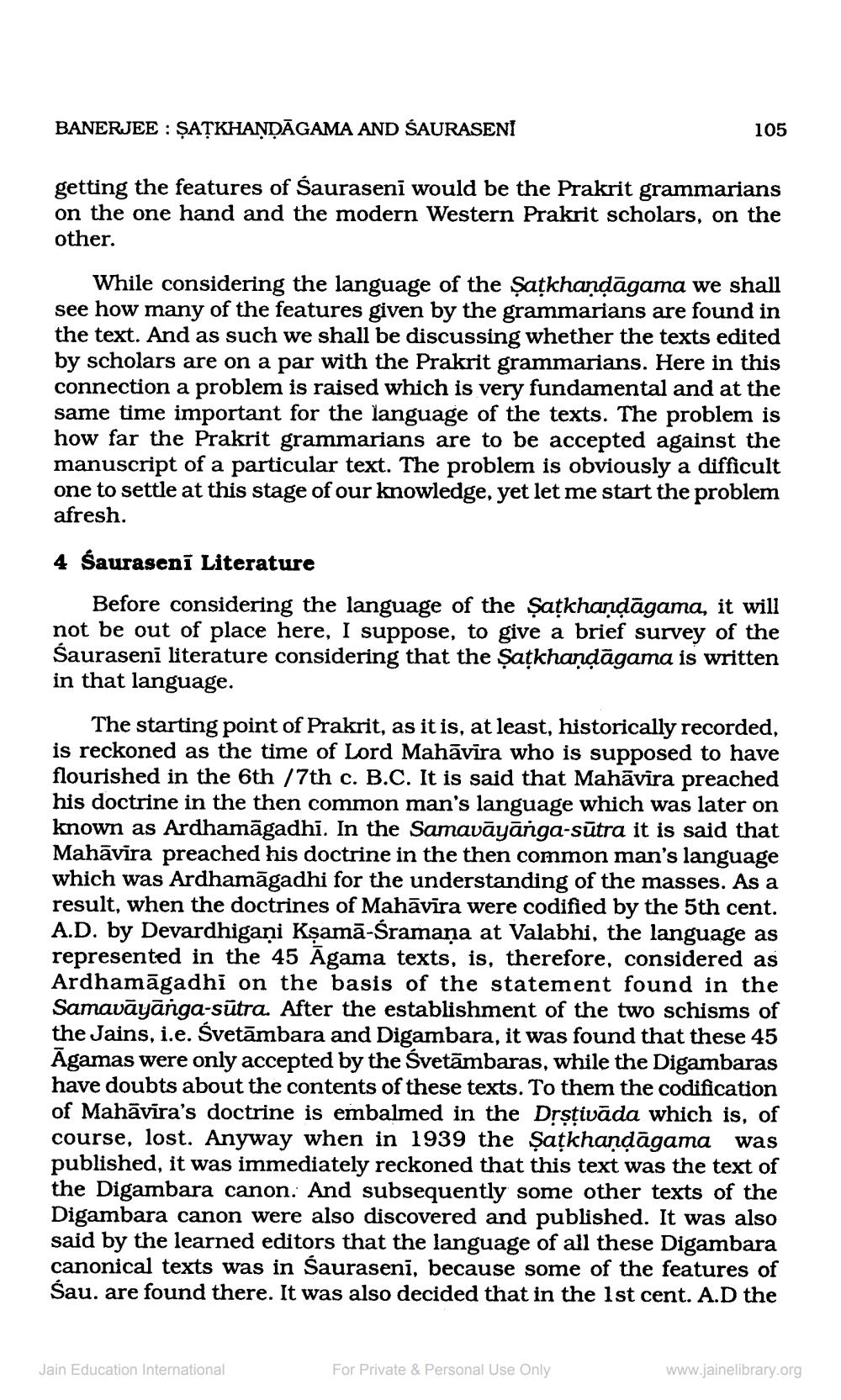Book Title: Jain Journal 1996 04 Author(s): Jain Bhawan Publication Publisher: Jain Bhawan Publication View full book textPage 7
________________ BANERJEE : ȘAȚKHAŅDĀGAMA AND SAURASENI 105 getting the features of Sauraseni would be the Prakrit grammarians on the one hand and the modern Western Prakrit scholars, on the other. While considering the language of the Șatkhaņdāgama we shall see how many of the features given by the grammarians are found in the text. And as such we shall be discussing whether the texts edited by scholars are on a par with the Prakrit grammarians. Here in this connection a problem is raised which is very fundamental and at the same time important for the language of the texts. The problem is how far the Prakrit grammarians are to be accepted against the manuscript of a particular text. The problem is obviously a difficult one to settle at this stage of our knowledge, yet let me start the problem afresh. 4 Śaurasenī Literature Before considering the language of the Șațkhanţāgama, it will not be out of place here, I suppose, to give a brief survey of the Śauraseni literature considering that the Şațkhandāgama is written in that language. The starting point of Prakrit, as it is, at least, historically recorded, is reckoned as the time of Lord Mahāvīra who is supposed to have flourished in the 6th /7th c. B.C. It is said that Mahāvīra preached his doctrine in the then common man's language which was later on known as Ardhamāgadhi. In the Samavāyānga-sūtra it is said that Mahāvira preached his doctrine in the then common man's language which was Ardhamāgadhi for the understanding of the masses. As a result, when the doctrines of Mahāvīra were codified by the 5th cent. A.D. by Devardhigani Kşamā-Śramaņa at Valabhi, the language as represented in the 45 Āgama texts, is, therefore, considered as Ardhamāgadhi on the basis of the statement found in the Samavāyānga-sutra. After the establishment of the two schisms of the Jains, i.e. Śvetāmbara and Digambara, it was found that these 45 Āgamas were only accepted by the Svetāmbaras, while the Digambaras have doubts about the contents of these texts. To them the codification of Mahāvīra's doctrine is embalmed in the Drstivāda which is, of course, lost. Anyway when in 1939 the Şațkhandāgama was published, it was immediately reckoned that this text was the text of the Digambara canon. And subsequently some other texts of the Digambara canon were also discovered and published. It was also said by the learned editors that the language of all these Digambara canonical texts was in Sauraseni, because some of the features of Sau. are found there. It was also decided that in the 1st cent. A.D the Jain Education International For Private & Personal Use Only www.jainelibrary.orgPage Navigation
1 ... 5 6 7 8 9 10 11 12 13 14 15 16 17 18 19 20 21 22 23 24 25 26 27 28 29 30 31 32 33 34 35 36 37 38 39 40 41 42 43 44 45 46 47 48 49 50 51 52 53 54 55
